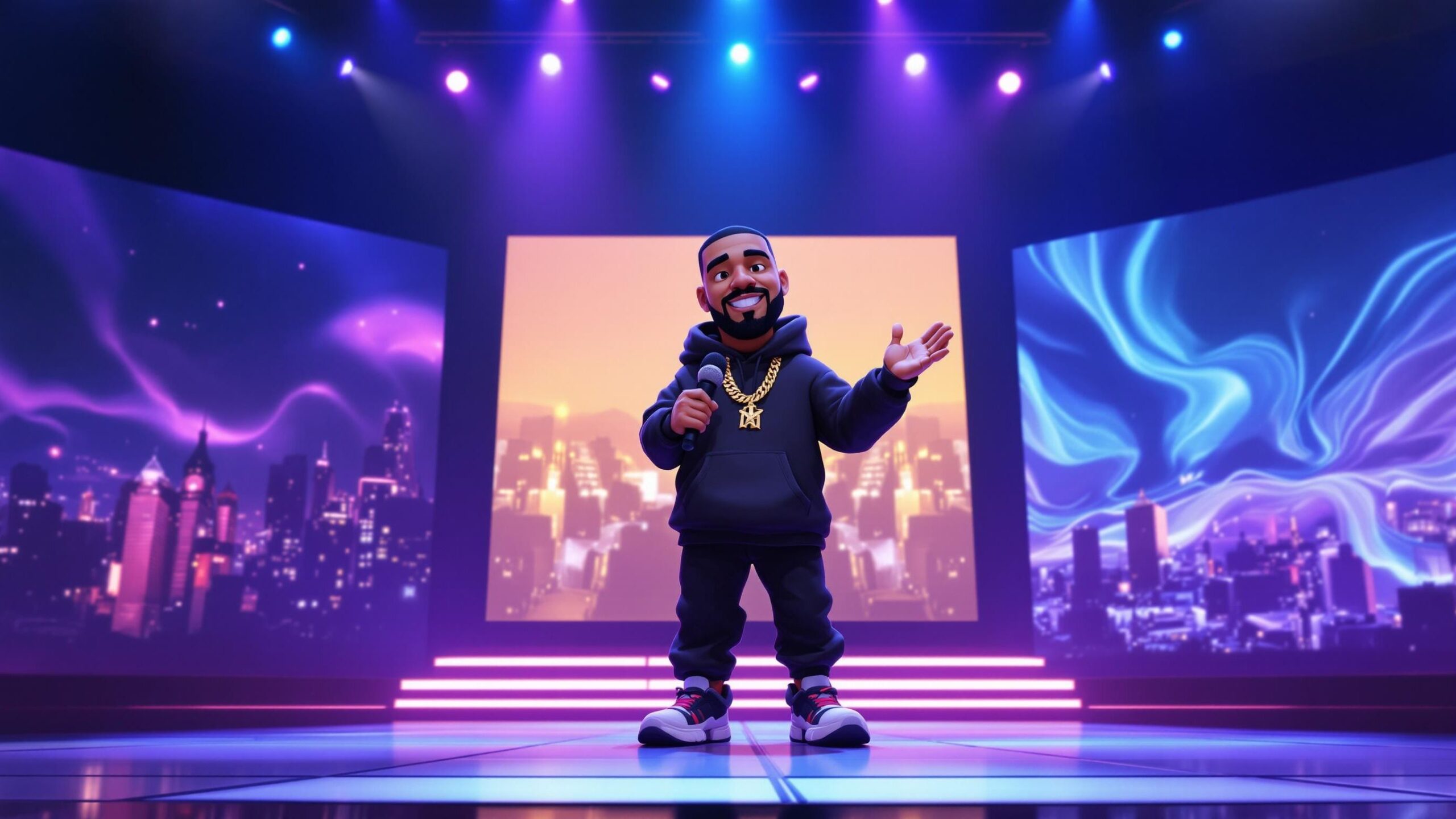Michael Jackson’s story begins far from the glitter of global fame—in the industrial city of Gary, Indiana. Born on August 29, 1958, as the seventh of nine children in the Jackson family, Michael was thrust into music from the start. Under the strict guidance of his father, Joe Jackson, he and his brothers formed The Jackson 5 and quickly rose to stardom in the late 1960s. With young Michael as the standout lead, their Motown hits like “I Want You Back” and “ABC” electrified audiences. But even in these early performances, it was clear: Michael wasn’t just talented—he was transcendent. What the world was witnessing wasn’t just the rise of a boy band. It was the early spark of a musical legend who would one day change everything.
Breaking Out Solo: Off the Wall and Into History
By the time he went solo in the late 1970s, Michael Jackson was already a star—but his 1979 album Off the Wall catapulted him into a new galaxy of fame. Collaborating with legendary producer Quincy Jones, Michael fused pop, disco, soul, and funk into a revolutionary sound. Songs like “Don’t Stop ’Til You Get Enough” and “Rock with You” turned dance floors into temples of joy. But Off the Wall was more than an album—it was a declaration of independence, a bold step away from his boyhood fame into adult artistry. Even critics who had dismissed teen idols as passing fads had to take notice. Michael Jackson wasn’t interested in following trends—he was setting them. The album sold over 20 million copies worldwide and laid the foundation for what would come next: something bigger, bolder, and utterly unforgettable.
Thriller: The Album That Changed Everything
If Off the Wall lit the fuse, Thriller was the explosion. Released in 1982, Thriller wasn’t just an album—it was a global phenomenon. With hits like “Billie Jean,” “Beat It,” and the title track “Thriller,” Michael redefined the very nature of music stardom. The Thriller music video, directed by John Landis, became a cultural touchstone—combining horror, choreography, and cinematic flair in a way that had never been done before. Jackson’s performance at the 1983 Motown 25 special, where he debuted the moonwalk, instantly became one of the most iconic moments in music history. Suddenly, everyone from breakdancers to ballet students wanted to glide backward like Michael. Thriller went on to become the best-selling album of all time, with over 70 million copies sold globally. It won a record-breaking eight Grammy Awards in one night and changed the way albums were marketed, promoted, and consumed. Michael didn’t just release music—he created events, experiences, and moments that stopped the world in its tracks.
Music Videos, Moonwalks, and the Birth of MTV Royalty
Michael Jackson didn’t just dominate charts—he transformed the music video into a serious art form. Long before YouTube or streaming platforms, Michael turned TV screens into theatrical stages. His videos for “Thriller,” “Smooth Criminal,” “Bad,” and “Black or White” became mini-movies, often featuring elaborate dance sequences, cutting-edge visual effects, and compelling narratives. Perhaps most importantly, Jackson was instrumental in breaking down racial barriers on MTV. Before him, Black artists received minimal airtime. But the success of “Billie Jean” forced the network’s hand. Suddenly, Jackson was not only visible—he was unstoppable. His ability to merge sound with vision reshaped how artists approached storytelling. He elevated pop performance into spectacle. Through visual innovation, meticulous choreography, and a powerful sense of branding, Jackson helped build the modern pop star blueprint.
The Humanitarian and the Message in the Music
For all his glitz and glamour, Michael Jackson also had a deeply humanitarian side. He used his fame to promote messages of peace, unity, and social justice. In tracks like “Man in the Mirror,” “Heal the World,” “Earth Song,” and “They Don’t Care About Us,” Jackson pleaded for a better, kinder world. His 1985 collaboration on “We Are the World,” which he co-wrote with Lionel Richie, became a global anthem for famine relief and raised millions for African humanitarian aid. Beyond the music, he supported over three dozen charities and visited hospitals, orphanages, and impoverished communities around the world. Michael’s philanthropic efforts were as extensive as his performances, though often overlooked. He believed music could heal and unite—a belief reflected not just in his lyrics, but in his life.
Bad, Dangerous, and Invincible: Reinventing the Pop Star Again and Again
After Thriller, most artists would have plateaued. Not Michael. In 1987, he released Bad—an album that, while stylistically different, proved his hit-making ability was no fluke. Songs like “Bad,” “The Way You Make Me Feel,” and “Dirty Diana” dominated the airwaves. His image changed too—leather jackets, buckles, and a street-smart edge. Then came Dangerous (1991), with socially conscious tracks like “Black or White” and mesmerizing performances that set new records. HIStory followed, blending past hits with new material steeped in defiance and introspection. Even Invincible, released in 2001, carried moments of brilliance despite industry politics. Michael didn’t just stay relevant—he evolved. His music reflected his internal battles, external pressures, and shifting public image. He pushed boundaries at every stage, whether it was genre, dance, fashion, or technology.
The Trials, the Tabloids, and the Struggle for Normalcy
As Michael’s fame soared, so too did the public fascination with his private life. From his changing appearance to his eccentric lifestyle, he became a constant subject of media scrutiny. The infamous nickname “Wacko Jacko” was a cruel simplification of a complex, sensitive individual who had spent nearly his entire life in the spotlight. More painfully, he faced multiple allegations and legal battles, most notably in the 1990s and 2000s. Though acquitted, the damage to his reputation was profound. He became more reclusive, haunted not by ghosts, but by headlines and betrayals. Despite the darkness, Michael continued to create, to perform, and to plan. His resilience was as much a part of his legacy as his dance moves. He remained, even under intense pressure, an artist in every sense of the word.
The Final Curtain: This Is It and the World in Mourning
In 2009, Michael Jackson was preparing for a grand comeback tour titled This Is It. The shows promised to be a triumphant return to the stage—and the world was ready. But on June 25, the world stood still. Michael Jackson had died at the age of 50 from cardiac arrest, sending shockwaves around the globe. Tributes poured in from every continent. Fans gathered in cities worldwide, mourning not just a performer, but a part of their childhood, a symbol of creativity, and a voice that had soundtracked their lives. The This Is It concert rehearsals were turned into a documentary, giving fans a glimpse of the brilliance that still burned brightly until the very end.
The Legacy Lives On: Moonwalking into Immortality
Michael Jackson’s influence can be felt everywhere—in the beats of pop hits, the precision of dance routines, the style of music videos, and even the fashion world. Artists like Beyoncé, Bruno Mars, The Weeknd, and Justin Timberlake cite him as a major influence. His records still stand. His videos still inspire. His moves are still mimicked by performers young and old. He changed the business of music, the language of performance, and the definition of stardom. Through sound and motion, through brilliance and pain, he reshaped what it meant to be an artist. Michael Jackson didn’t just entertain—he transcended.
Forever the King
Michael Jackson wasn’t just a musician. He was a phenomenon—a singular blend of talent, vision, and relentless pursuit of perfection. His legacy isn’t just written in platinum albums or sold-out stadiums. It lives in the echo of a bassline, the glide of a moonwalk, the whisper of a message asking us to change our ways. He proved that one voice, one beat, one dance could change the world. And though he left this world far too soon, the King of Pop reigns on—in rhythm, in memory, and in the hearts of fans across the globe.




